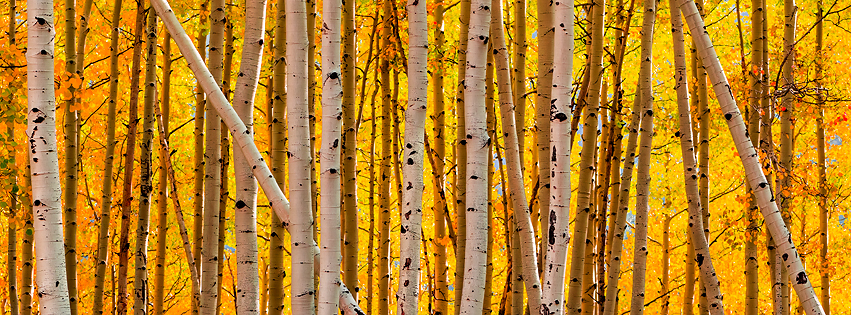By Austa Somvichian-Clausen, Communications Intern
While we’re anxiously awaiting our travels to Rocky Mountain National Park this September, let’s learn a bit about the star of the Rockies’ autumnal show — the quaking aspen.
The quaking aspen is the most widely distributed tree in North America and can be identified by their smooth, white bark that is marked by black scares where lower branches are naturally self-pruned. The leaves of the quaking aspen are heart-shaped, with finely saw-toothed margins. The leaves attach to branches via a long and flattened petiole, which causes the leaves to flutter at even the slightest breeze — hence the name “quaking aspen.” In the spring and summer, leaves are glossy green. But, during the fall, leaves transform into a rainbow of yellow, gold and, in some instances, red. These beautiful fall colors are very important to many communities in the West, and tourists travel hundreds of miles to view them.
The quaking aspen also has a unique winter survival mechanism. Beneath the aspen’s thin white outer bark is a thin photosynthetic green layer. This layer allows the plant to synthesize sugars and retain bark, making it survival food for deer and elk during hard winters.
Quaking aspens are extremely unique for a number of reasons. First, unlike most trees that spread through flowering and sexual reproduction, the quaking aspen reproduce asexually, by sprouting new trees from the expansive lateral root of the parent. Thus, each tree isn’t technically an individual, but is one part of a massive single clone. “The Trembling Giant,” or Pando, is an enormous grove of quaking aspens in Utah, very recently thought to be the world’s largest organism, spanning 107 acres and weighing 6,615 tons. During autumn, you can see where the different aspen stands are located — the trees of a particular clone will change color at the same time because they are genetically related.
Another unique feature of the quaking aspen is its relationship with fire. The aspen is considered a fire-induced successional species. Fire reduces the overstory, stimulates shoots to sprout and kills invading conifers growing in the aspen clone. A fire intense enough to kill an aspen overstory will stimulate abundant suckering — as many as 50,000 to 100,000 suckers can sprout and grow on a single acre after a fire.
The quaking aspen is just one of the interesting and beautiful plant species that we will get to see on our trip to Rocky Mountain National Park!
Make sure to reserve your spot soon to avoid missing out on the trip of a lifetime.

